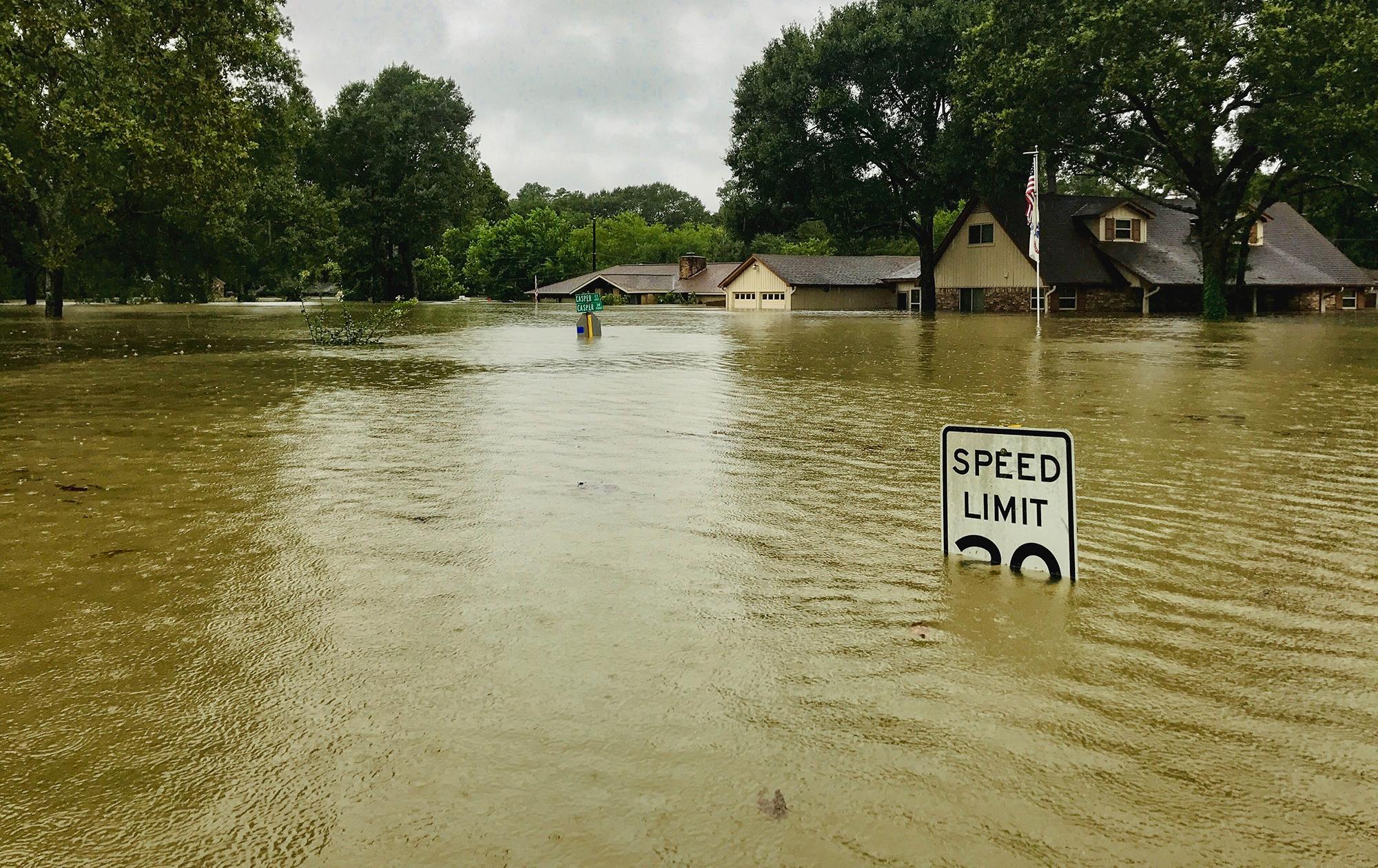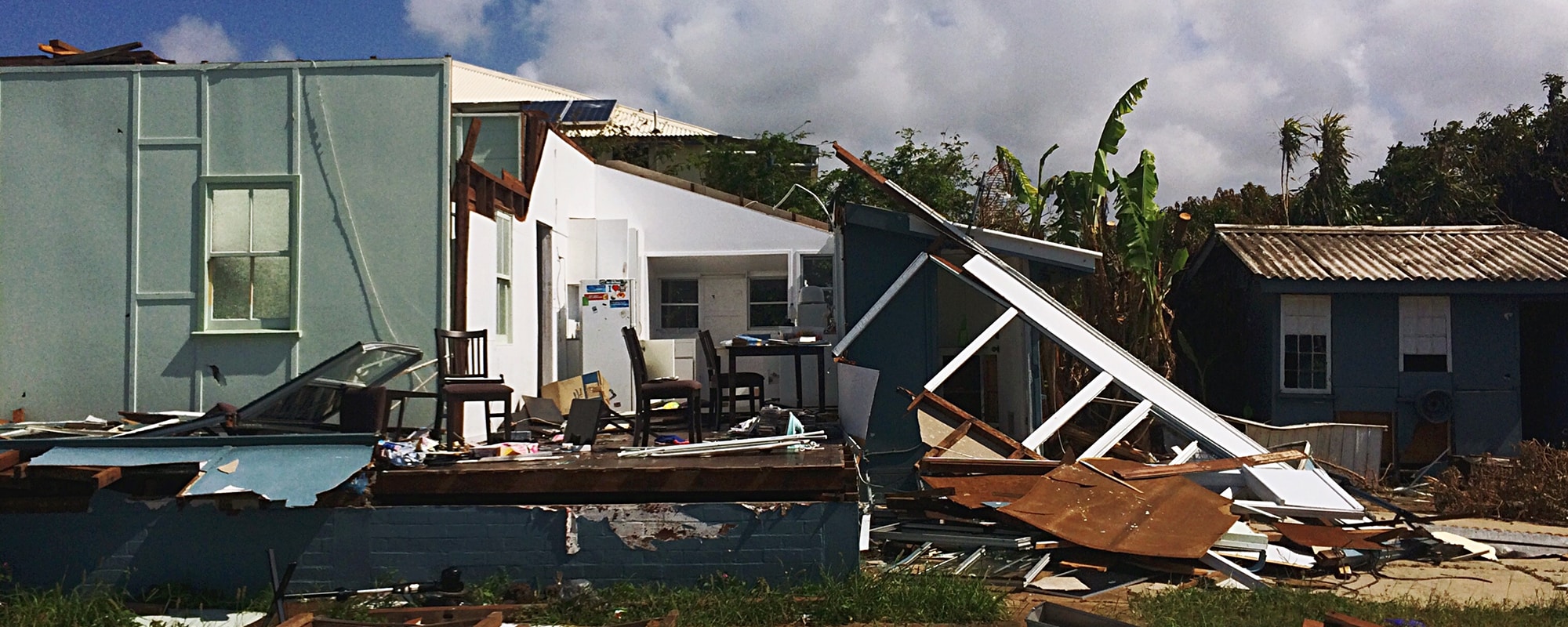
Lifelines work—but
people need to know
they’ll be extended.
Helping FEMA engage property owners in areas at high risk of flooding
AN INCH OF WATER ISN’T MUCH—UNTIL IT’S IN SOMEONE’S HOME.

The Situation
Building a house takes time; making memories and turning it into a home takes longer. And a flood inflicts damage in an instant, often leaving staggering repair costs in its wake. Homeowners buy flood insurance policies hoping they’ll never need to use them; but when they do, it can mean the difference between recovery and financial devastation.
That’s a message that FEMA wants people to hear. Created by the US Congress in 1968, the National Flood Insurance Program (NFIP)—administered by FEMA—is the largest single-line insurance program in the United States, providing flood insurance to property owners, renters, and businesses to help them get back on their feet more quickly after the water recedes.i FEMA has always been committed to helping more people access policies, yet too many property owners—even in areas at higher risk for significant flooding—don’t take advantage of the program.
FEMA believed it could increase participation by getting the word out in a more compelling way but also knew the challenge went beyond reaching more people: It was about reaching the right people. With limited marketing resources, FEMA needed to figure out how to pinpoint and identify the most optimal customers for new flood insurance policies. That’s where Deloitte came on board.
THE SOLVE
FEMA enlisted a team where Deloitte serves as a subcontractor to prime contractor Yes&, which pairs creative capabilities with extensive data analytics resources, resulting in an ambitious, innovative multiyear plan. More than 40 Deloitte professionals with specializations, such as behavioral insights, marketing, UX/UI design, content strategy, copywriting, social media, and project strategy, have been part of delivering a solution based on three key strengths: behavioral science, marketing and outreach, and thought leadership.
Together with FEMA, Deloitte created content that is shared in-person, on social media, and via FloodSmart.gov, a website owned and operated by the NFIP. The new content is already being deployed for consumers to discover on platforms they frequent, but a significant focus of the team’s efforts in the first year has been helping FEMA build a new foundation for the customer journey designed to enable the NFIP to identify optimal candidates for flood insurance and engage with them more effectively. In the second year, we focused on using evidence to tailor tools and communications to potential policyholders and FEMA program partners for greater impact.
The team is also helping NFIP in its efforts to be compliant with the Evidence Act by developing the program’s first learning agenda and evaluation strategy to support evidence-based policy decision-making. This includes conducting surveys, developing personas, and employing data analytics tools such as Deloitte’s HealthPrism™ solution. All of these activities are firmly rooted in behavioral science and are designed to help NFIP gain new insights—at the national level—into the expectations, biases, and motivations that may come into play as consumers are deciding whether to acquire or maintain flood insurance policies.
TARGETED MESSAGING HELPS AVOID A FLOOD OF INEFFECTUAL COMMUNICATION.
The Impact
For property owners, flood insurance is an investment, a less visible but crucial flood recovery tool that offers peace of mind before, during, and after a flood. Similarly, FEMA’s work with the team represents a significant investment in the NFIP and demonstrates the measured approach FEMA is taking to deliver impactful communications that inspire consumers to take key actions. These efforts have laid a foundation that can be built upon for years to come.
To solidify that base, the team is helping FEMA navigate several complex but necessary processes, such as those required by the Paperwork Reduction Act (PRA). As FEMA continues to pursue its own PRA clearance, the team employs other data sets and methodologies to gain directional insights that are integrated into marketing and communication efforts.
And through an extensive UX/UI baseline assessment, we’ve pinpointed ways that FEMA can enhance digital tools being deployed, both to improve the customer experience and to inform FEMA’s targeting decisions.
- Chapters
- descriptions off, selected
- subtitles off, selected
- captions settings, opens captions settings dialog
- captions off, selected
This is a modal window.
The Video Cloud resource was not found.
This is a modal window. This modal can be closed by pressing the Escape key or activating the close button.
LET'S CONNECT.
Do these challenges sound familiar?
1 FEMA, Flood Insurance page, accessed September 27, 2022.
1 FEMA, Flood Insurance page, accessed September 27, 2022.
-
Alex Haseley
Principal
Deloitte & Touche LLP
ahaseley@deloitte.com
+1 202 329 4912 -
Steven Redlinger
Senior Manager
Deloitte Consulting LLP
sredlinger@deloitte.com
+ 1 703 253 2616 -
Emily Carr
Managing Director
Deloitte Consulting LLP
ecarr@deloitte.com
+1 703 258 2606 -
${tile-4-title}
${tile-4-info}
-
${tile-5-title}
${tile-5-info}
-
${tile-6-title}
${tile-6-info}
Insert Custom HTML fragment. Do not delete! This box/component contains code
that is needed on this page. This message will not be visible when page is
activated.
+++ DO NOT USE THIS FRAGMENT WITHOUT EXPLICIT APPROVAL FROM THE CREATIVE
STUDIO DEVELOPMENT TEAM +++
Custom Sticky Header
Explore more stories
Government & Public Services
Life brings changes. The Defense Health Agency brought clarity.
Integrated marketing communications campaigns keep TRICARE beneficiaries connected throughout all life’s changes
Government & Public Services
AI targeting. Human assisting.
How predictive modeling helped one state serve its most vulnerable population
Government & Public Services